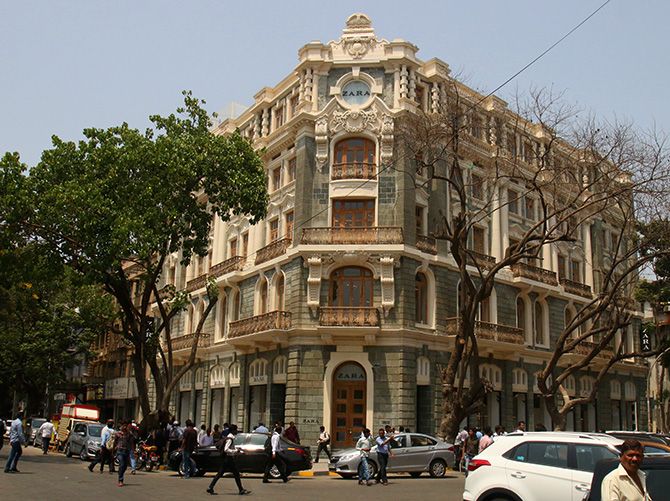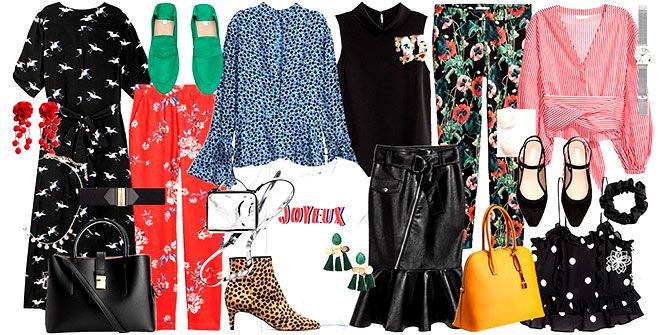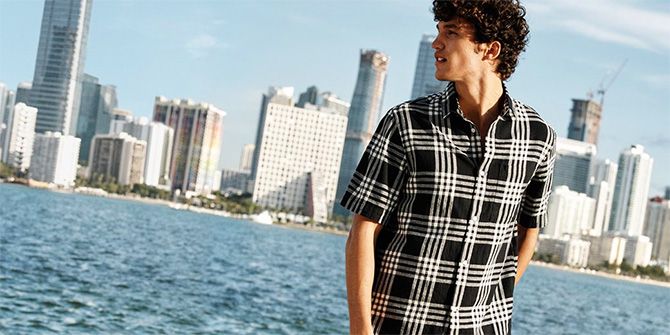 | « Back to article | Print this article |
The Swedish fashion-retail brand cracks open the Indian market faster than its competitors, gaining from an aggressive pricing and retail policy.
When Hennes & Mauritz (H&M) opened its first store in New Delhi in October 2015, many wrote it off for having delayed entry into a market that was already flush with global labels.
Zara, Gap, Marks & Spencer and Forever 21 had beaten the Swedish fashion major by quite a few years.
H&M hit the ground running, opening up nearly a store a month since the first month and posting a net profit of Rs 1.4 crores in the six-month period of October 2016 to March 2017.

While this makes it the fastest among international fashion chains to get profitable in the Indian market, the coming months mark a crucial period as the consumer landscape changes when H&M forays outside the metros and; the clamour for affordability grows even louder across the country.
So far H&M has raced ahead by adopting affordable pricing strategies and ensuring high visibility for the brand, both in terms of advertising and by opening its stores in prime locations.
It has opened 16 stores in 20 months.

Compare this with Zara, launched in India in 2010 that has taken seven years to open 21 stores and the difference between the global rivals is evident.
The two brands engage with customers differently too. H&M announces its entry into a city or a locality with big outdoor campaigns and its stores are usually located close to Zara, often in the same mall.
H&M was off the block quickly and that helped post a net profit in six months of its first financial year, say experts. “Positioned as an extremely good priced brand, it has worked well in Indian markets,” says Jaydeep Shetty, chief executive of apparel chain Mineral, adding that every zone and collection in its stores has pricing clearly written on them.

In fact much of the social media chatter in the days soon after H&M launched in India was about bargain offers for international styles. An H&M spokesperson said the brand aspires to create fashion that delivers a good balance between modern basics, current fashion and latest trends.
“Zara is not so price driven. It does not flaunt prices aggressively and high fashion is its main plank,” Shetty says. Till last year, the entry price for a Zara product was Rs 2,200, for H&M Rs 1,500. Zara cut prices by 12 to 15 per cent last year in what most believed was a response to H&M’s aggressive pricing play.
Zara’s joint venture in India, Inditex Trent, posted a 21 per cent jump in sales in 2016-2017 at Rs 1,023 crores as compared to Rs 842.5 crores in 2015-2016. Its profit after tax fell to Rs 48 crores from Rs 80 crores a year ago according to Trent’s latest annual report.
H&M clocked net sales worth Rs 194 crores between October 2016 and March 2017. Baqar Naqvi, director at Wazir Advisors, a business consultancy, says H&M has scored with its aggressive pricing and markdowns strategy. 
Growing at 9 per cent in 2016, India leads emerging markets as the fastest growing country for fashion according to a report by McKinsey and Business of Fashion, The State of Fashion (December 2016). For global brands, the Indian market promises growth spikes in a relatively flat world.
Hence the frenzied rush to open new stores and offer lucrative discounts. But the report says that this is not healthy as brands end up in a race to the bottom to appease the deal-hungry customer. To grow, brands have to differentiate themselves in terms of styles, adaptability to local tastes and in-store experiences.
At present H&M and others bring collections developed at their headquarters into the Indian market. Indian customers are keen to pick up international branded apparel at marginal incremental cost and H&M played successfully into their aspirational behaviour. “H&M with its global pedigree, fashion positioning and value pricing has become the hot favourite,” Naqvi said. He believes that the momentum will continue for 3-5 years.
H&M says it focuses on providing a variety of styles at various price points. “We strive to meet the demand from customers of all ages and styles,” the spokesperson said. Many believe that the chain has been prudent with its retail policy. “H&M does not pay fixed rents but a percentage of sales. Many malls have subsidised fit outs also, which have reduced their costs,” Shetty adds.
According to an earlier report, Mumbai-based Inorbit Mall has committed Rs 12 crores on fit-outs and upcoming H&M stores in Mumbai, Hyderabad and Bengaluru. H&M also worked a special revenue sharing deal with Phoenix Mills for two of its stores and is set to open eight new stores in the second half of 2017 and launch online operations in 2018.
Like other fashion brands, H&M wants to go deeper in existing cities and get into new cities as well. It is looking to add two more stores in Mumbai and Bengaluru and opening a sixth store in NCR and enter Coimbatore, Indore and Amritsar.
“Consumers across the country have similar aspirations and desire better and more fashionable brands. Thus well priced brands will do as well in smaller towns too. Zara has already shown this, with its tier II town stores doing almost as good as other stores,” Naqvi said, adding that the only challenge that would come would be in the form of quality real estate availability, once they go beyond the top 30-40 cities. The other challenge staring brands such as H&M is getting the style mix right, once the novelty of bargains and discounts wears off.